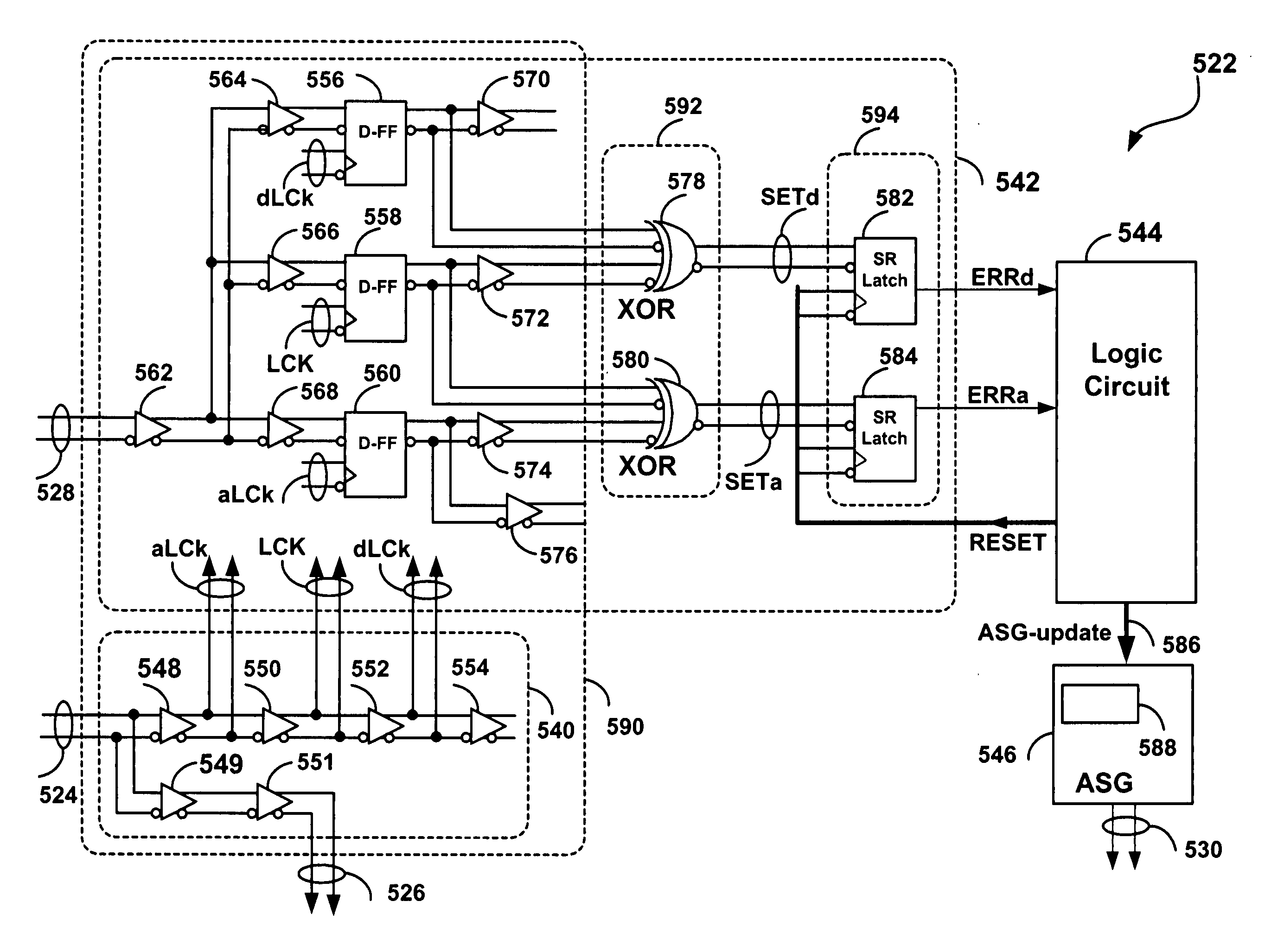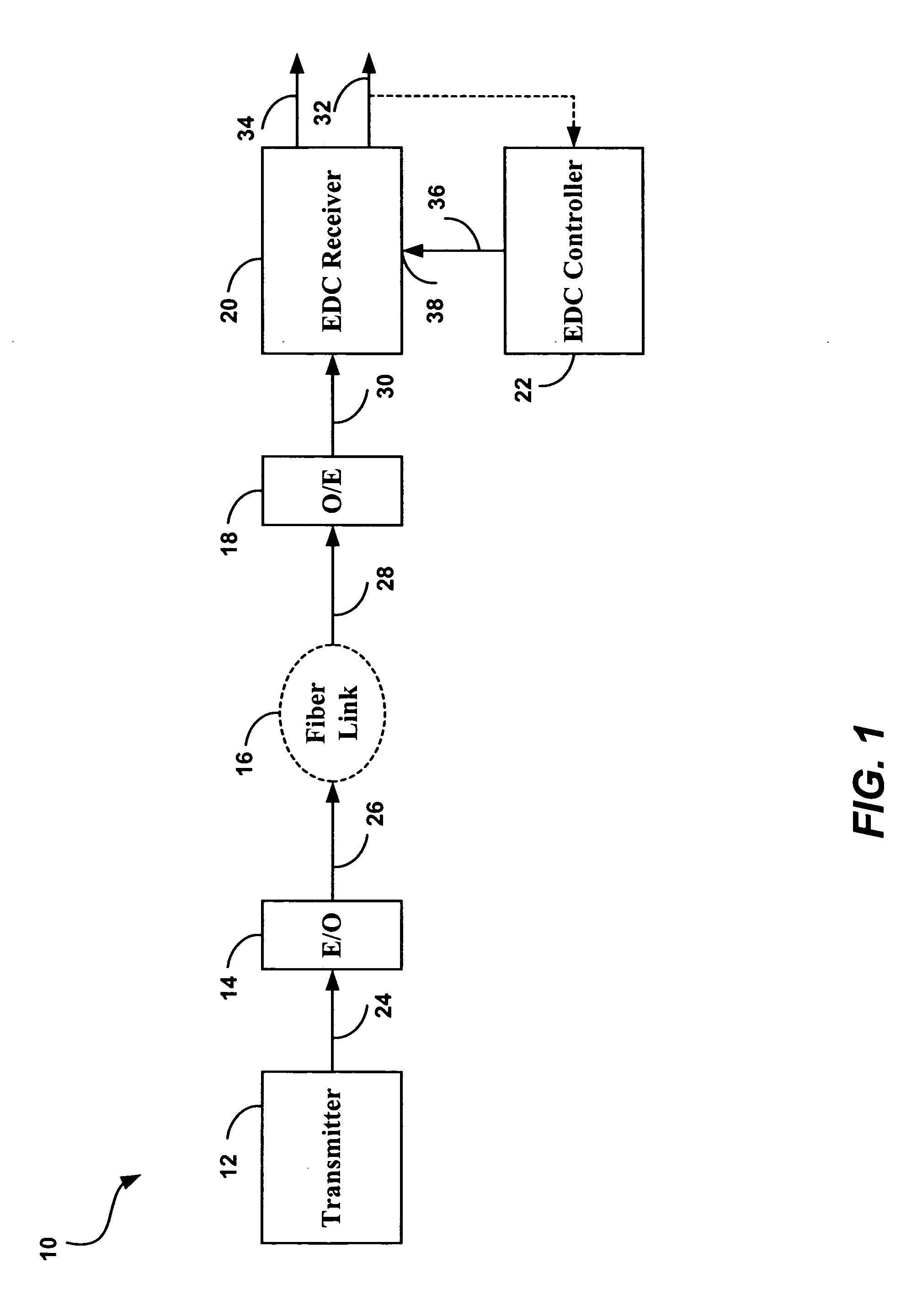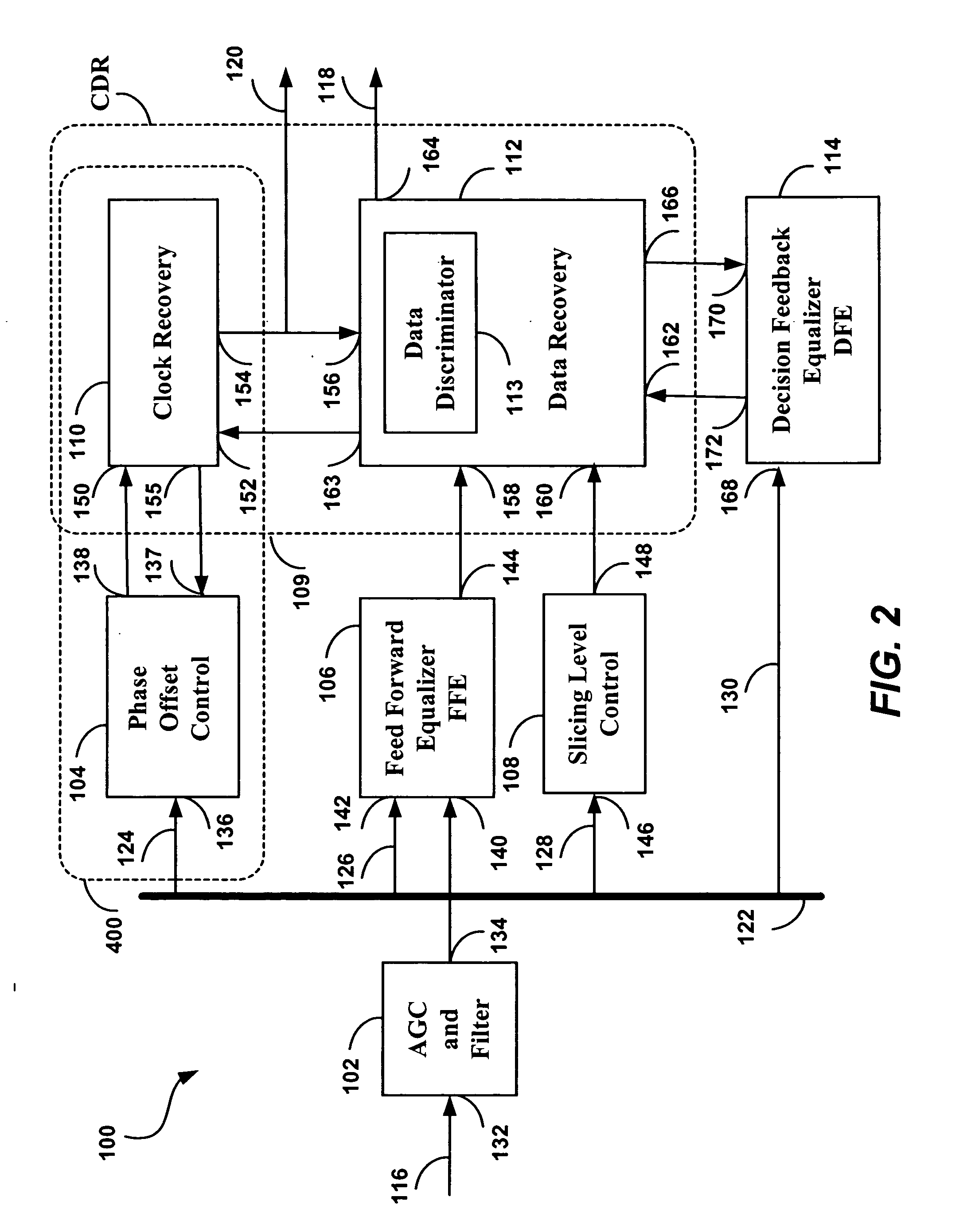Circuit for adaptive sampling edge position control and a method therefor
a position control and sampling edge technology, applied in the field of electronic circuits, can solve problems such as signal degradation, simple compensation techniques such as simple correction of path frequency response such as boosting the high frequency components of signals, and insufficient to deal with high speed signals that may be severely degraded, and achieve the effect of reducing the number of signals in the system, and improving the quality of signals
- Summary
- Abstract
- Description
- Claims
- Application Information
AI Technical Summary
Benefits of technology
Problems solved by technology
Method used
Image
Examples
Embodiment Construction
[0086] The present invention is concerned with the automatic adaptation of the sampling edge position for a Clock and Data Recovery (CDR) having clock-to-data phase offset control.
[0087] For an undistorted signal, symmetrical on the vertical axis, the optimum eye sampling time (sampling edge position) will be in the middle of the eye, at 50%. For a distorted eye, performance can be improved by shifting the sampling point away from the eye center. This is accomplished using a sampling edge position control or phase offset (offset from the eye center) control circuit incorporated in the clock and data recovery block (CDR).
[0088] An Adaptive Sampling Edge Position Control Circuit and method have been developed, which may be incorporated into a CDR circuit having phase offset control. It is understood that the sampling edge position detection circuit of the embodiment of the present invention, providing a capability for improved and adaptive sampling edge position. This may be used in...
PUM
 Login to View More
Login to View More Abstract
Description
Claims
Application Information
 Login to View More
Login to View More - R&D
- Intellectual Property
- Life Sciences
- Materials
- Tech Scout
- Unparalleled Data Quality
- Higher Quality Content
- 60% Fewer Hallucinations
Browse by: Latest US Patents, China's latest patents, Technical Efficacy Thesaurus, Application Domain, Technology Topic, Popular Technical Reports.
© 2025 PatSnap. All rights reserved.Legal|Privacy policy|Modern Slavery Act Transparency Statement|Sitemap|About US| Contact US: help@patsnap.com



